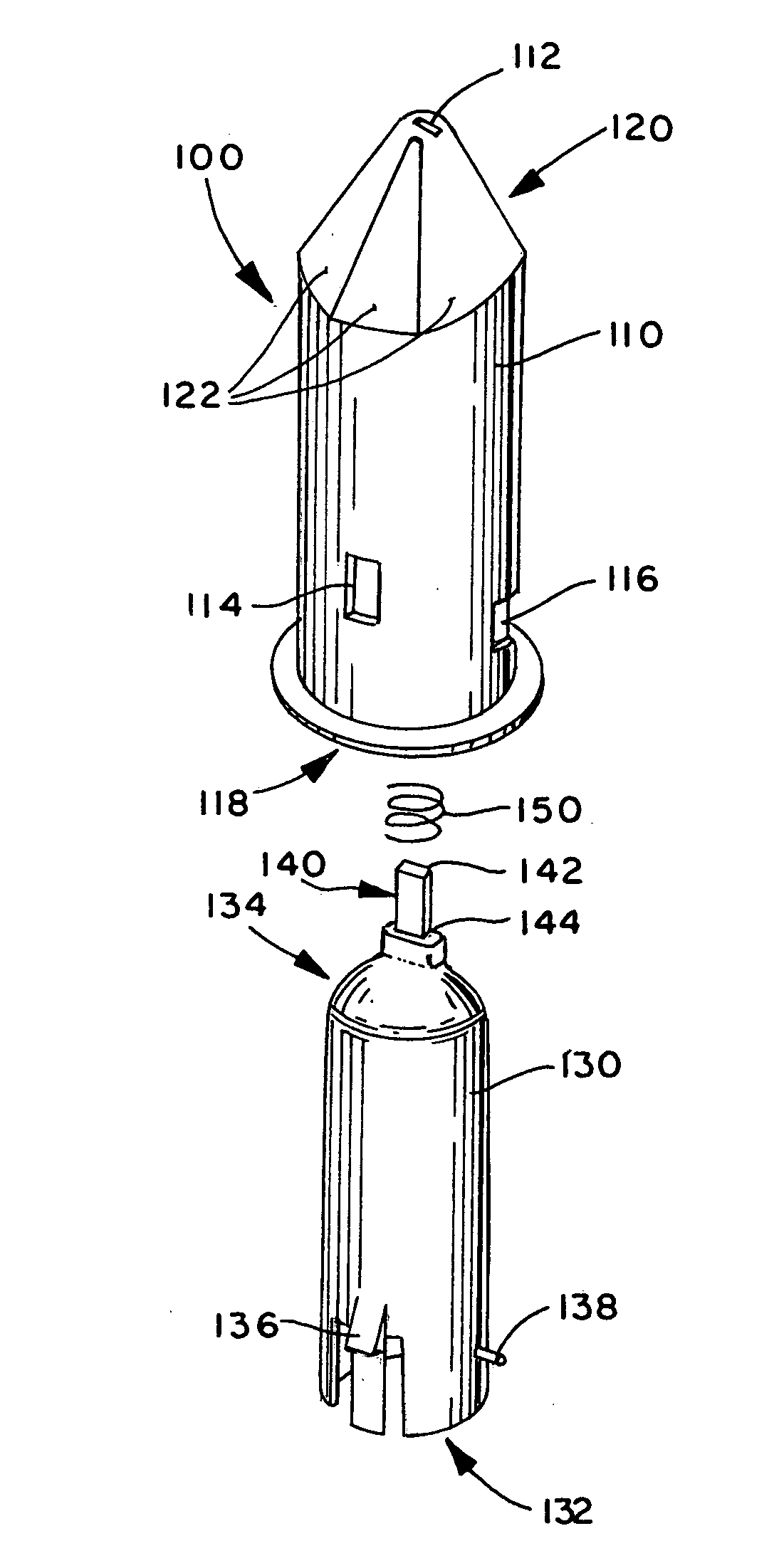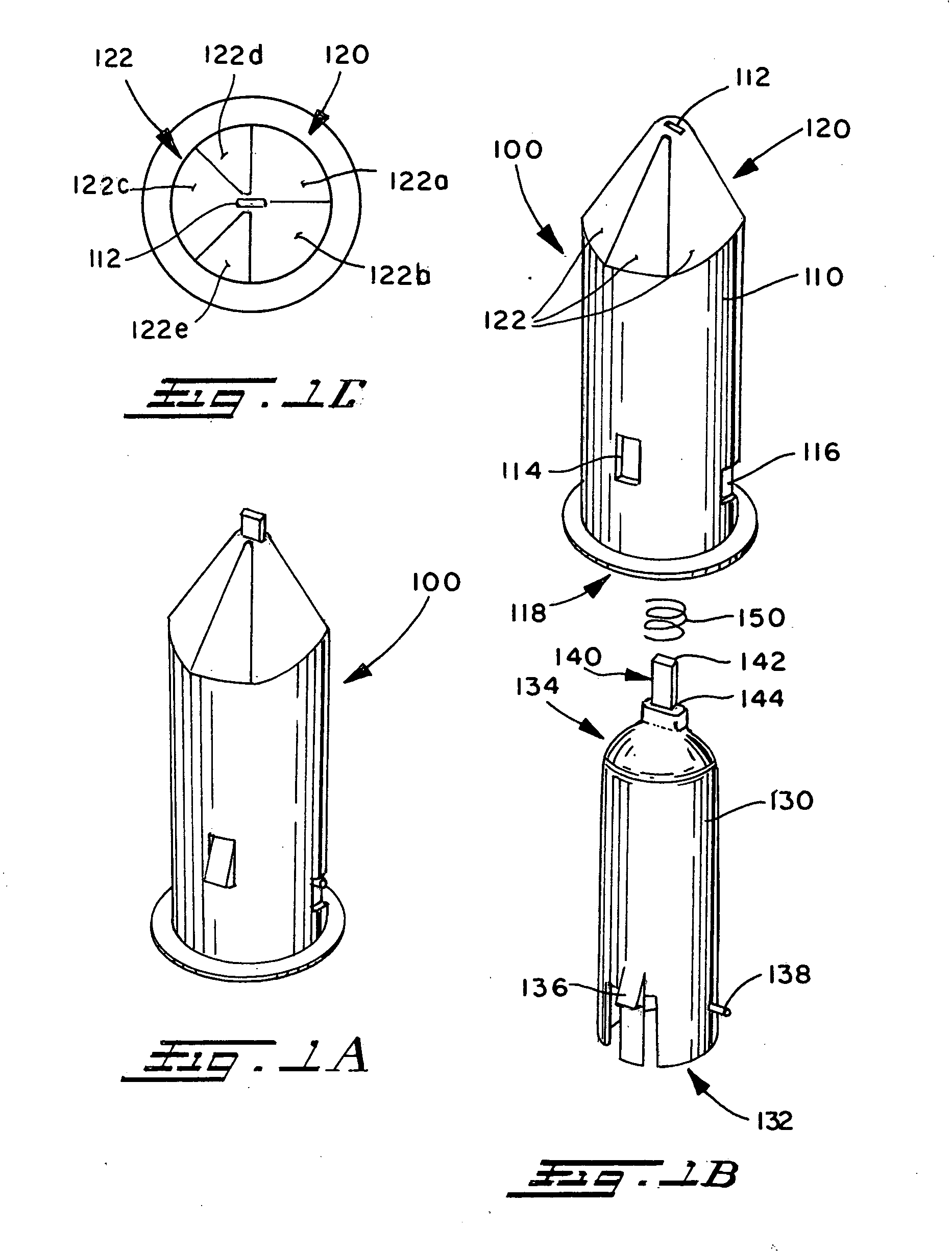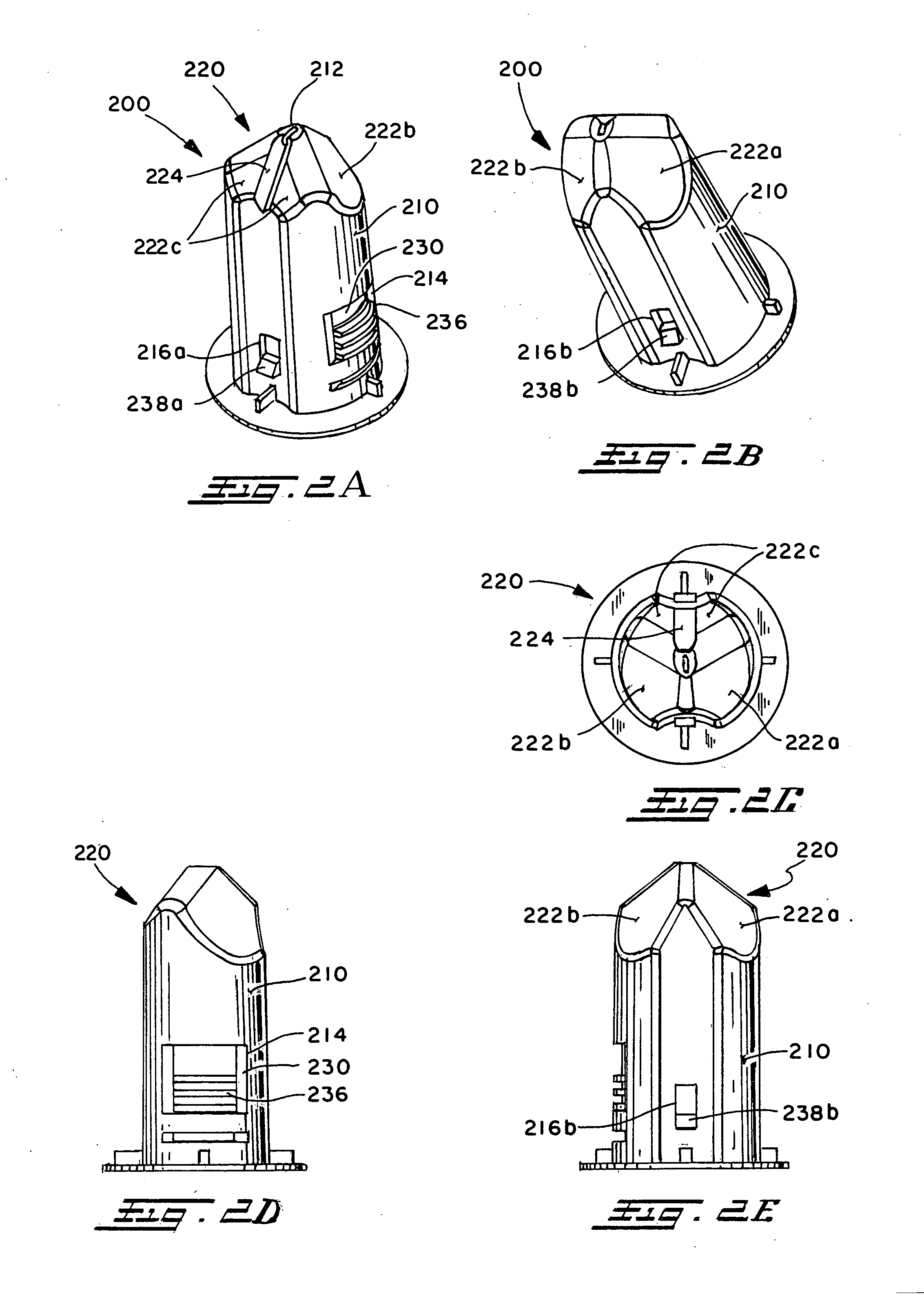Cutter adapted to be held by human hand or finger
a technology of hand or finger, which is applied in the field of cutting devices, can solve the problems of limited cutting range of materials, device limitations, and breadth of material that prior art cutters can cut, and achieve the effects of convenient use, safety, accuracy and speed, and comfort of holding
- Summary
- Abstract
- Description
- Claims
- Application Information
AI Technical Summary
Benefits of technology
Problems solved by technology
Method used
Image
Examples
Embodiment Construction
[0019] With reference to FIGS. 1A-1C, a first embodiment 100 of a cutter device is shown. In particular, FIG. 1A illustrates a perspective view of the cutter device 100 in its assembled configuration. Generally, the cutter device 100 comprises an outer sleeve 110, an inner sleeve 130, a blade 140 and a biasing element 150. The outer sleeve 110 includes a slot 112, a button aperture 114, at least one retaining rib aperture 116, an open end 118 and a closed end 120. The closed end 120 further comprises a plurality of flat guide surfaces 122.
[0020] The inner sleeve 130 generally includes an open end 132, a closed end 134, a button 136 and at least one retaining rib 138. The blade 140 is disposed on the closed end 134 of the inner sleeve 130. The blade 140 includes a sharp end 142 and a shank end 144. The sharp end 142 is intended to serve as the cutting edge for the cutter device 100. The shank end 144 provides a surface by which to attach the blade 140 to the inner sleeve 130. The bu...
PUM
| Property | Measurement | Unit |
|---|---|---|
| angle | aaaaa | aaaaa |
| 90° angle | aaaaa | aaaaa |
| intersection angle | aaaaa | aaaaa |
Abstract
Description
Claims
Application Information
 Login to View More
Login to View More - R&D
- Intellectual Property
- Life Sciences
- Materials
- Tech Scout
- Unparalleled Data Quality
- Higher Quality Content
- 60% Fewer Hallucinations
Browse by: Latest US Patents, China's latest patents, Technical Efficacy Thesaurus, Application Domain, Technology Topic, Popular Technical Reports.
© 2025 PatSnap. All rights reserved.Legal|Privacy policy|Modern Slavery Act Transparency Statement|Sitemap|About US| Contact US: help@patsnap.com



